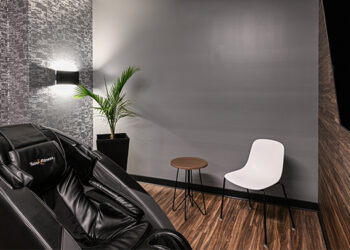3D body scanning is being used by clubs across the U.S. to support personal training and provide a competitive advantage, among other benefits.
With this in mind, we sat down with Crunch Franchise’s executive vice president, Craig Pepin-Donat, about the ins and outs of 3D body scanning and why they chose to partner with Styku to implement the technology.
CS: Why did you want to implement 3D body scanning technology at Crunch clubs?
CP: The benefit of body scanning technology is to support personal training, so it has to be embedded in the fitness orientation and part of any personal training offering. Having the ability to share fitness progress on multiple fronts including bodyweight, body fat and circumstance measurements with progress overlays and 3D rendering provides a unique tool to guide the process for a results-based platform.
CS: What are some best practices for implementing 3D body scanning?
CP: Before integration, it’s important to make sure you are using the right technology. We researched them all and did side-by-side tests — and Styku was hands down the best.
Any time you introduce technology or any new process, there’s a lot of training and development involved to make sure it’s used properly to get the best possible result. The challenge is simply making sure that the training guides that process and that you test the process and prove success before a large-scale rollout. Obviously, this is much more important when operating a large multi-club organization, but even if you have one club, it has to be right before you install.
CS: What are some of the other benefits of fitness tracking and testing?
CP: Almost everyone that joins a gym has a goal and unless there is a plan to achieve that goal and a proven platform for monitoring and managing results, you’re shooting in the dark. If your monitoring system only measures one component of the results, you don’t have all the information you need to effectively consult your member. In addition, when someone knows that results are being tracked on multiple fronts and on a schedule, they tend to execute more effectively on fitness and nutrition recommendations. It also gives the trainer more information to guide the training and nutrition process.
CS: Is 3D body scanning a great differentiator for clubs that offer it?
CP: Most clubs use some form of body composition measurement with skin fold or bioelectrical impedance. When you can say, “Our club offers the most sophisticated 3D body scanning technology on the planet that tracks your exact total-body composition results and helps you get to your goal faster,” you have a competitive advantage. When people see a two scan overlay and you show them how bodyweight can fluctuate while body fat and circumference measurement show improvements, it’s a game changer.
CS: Do you have any tips for maximizing profits with 3D body scanning?
CP: You shouldn’t go into this thinking about using it as a separate profit center. Think of it as a value add to personal training. Members can get one scan when they do the fitness orientation but to see results, they need to work with a nationally certified trainer who will put them on a path to success, which includes a free body scan every two weeks. You can also offer it as a separate service, but don’t discount it too much because the value is with driving personal training, not selling body scans.
For more information on Styku, visit http://www.styku.com/.
Stay ahead in the fitness industry with exclusive updates!
Rachel Zabonick-Chonko is the editor-in-chief of Club Solutions Magazine. She can be reached at rachel@peakemedia.com.












